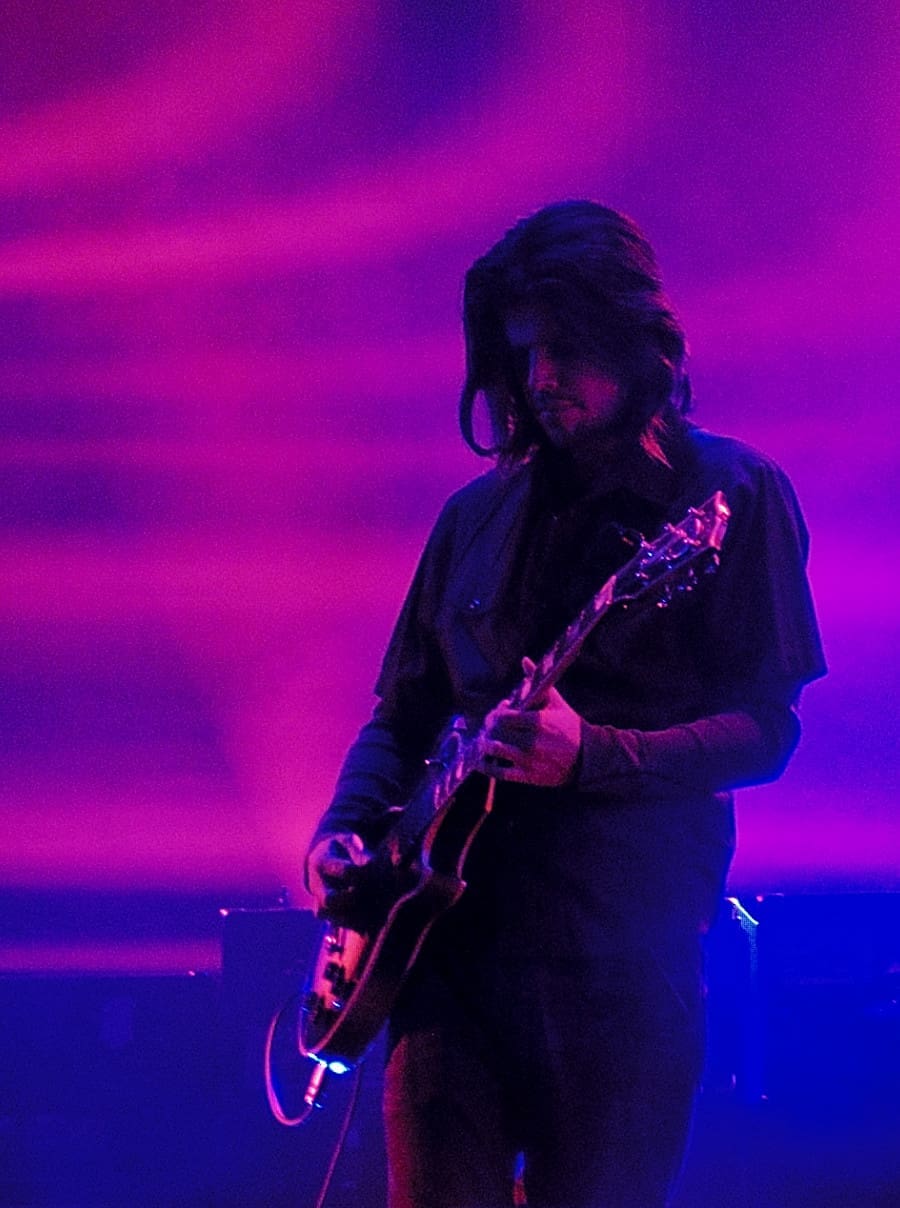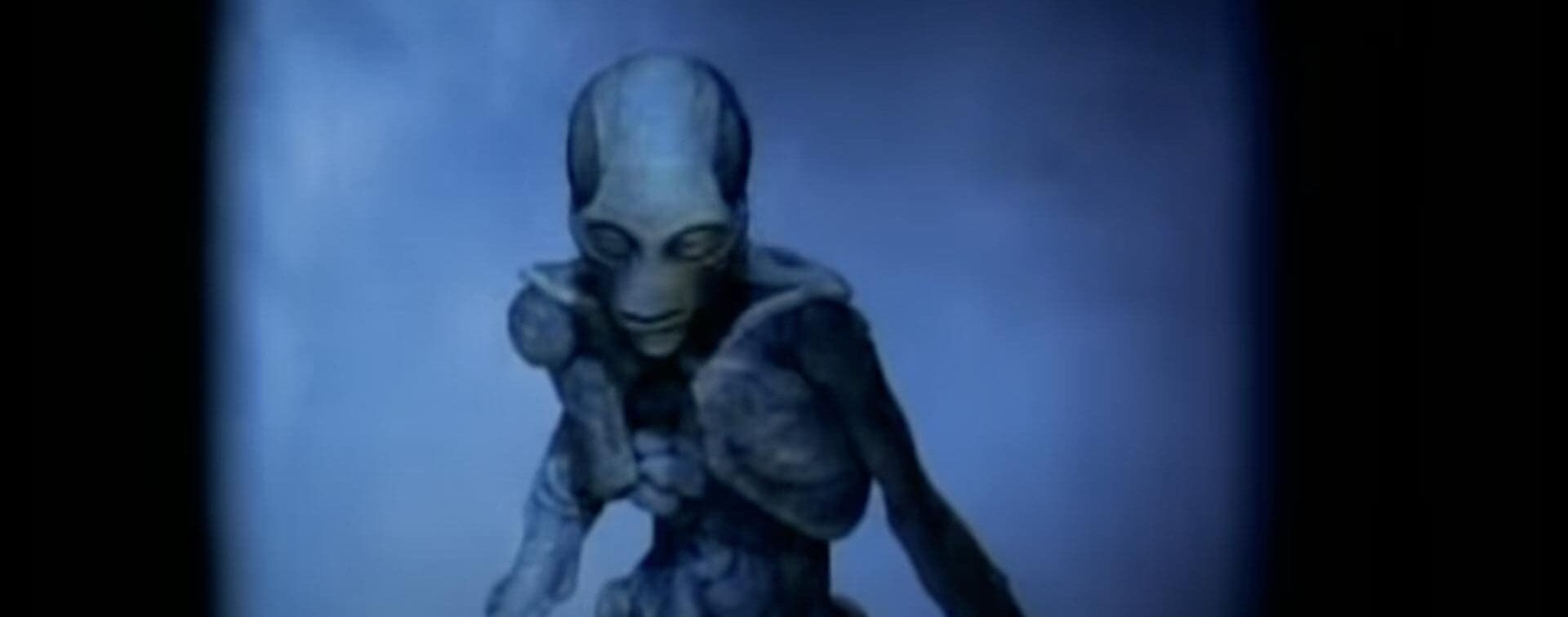Tool’s “Ænema”: A Visceral Odyssey of Fear and Enlightenment
Tool’s music video for “Ænema” is a violent, cathartic awakening. Directed by guitarist Adam Jones, the video is a twisted and nightmarish vision of inner chaos, spirituality, and societal decay. It’s the kind of video that crawls under your skin and makes a permanent home in your subconscious, all while you’re mesmerized by its grotesque beauty.
“Ænema” is a visual manifesto that encapsulates Tool’s essence: a rejection of mediocrity, a push toward enlightenment, and a brutal interrogation of humanity’s darkest impulses. Released in 1996, at a time when the music video format was dominated by glossy pop acts and cookie-cutter rock bands, Tool smashed through the mold.
Tool Ænema: The Video That Ripped Open Reality and Showed Us the Dark Core of the Human Psyche
This wasn’t entertainment—it was art, a revolutionary blend of surrealist imagery and philosophical inquiry. At its core, the video and song are a purge of the superficial, an exorcism of everything wrong with the modern world. It’s unapologetically cerebral, yet primal. To truly understand its influence, you have to dive headfirst into the twisted mind of Adam Jones, the musical mastermind behind the guitar and the visual architect behind Tool’s most iconic videos.
A Surrealist Horror Show: Adam Jones’ Visual Brilliance

Adam Jones of Tool performing live. Image by deep ghosh, licensed under CC BY-SA 2.0, via Wikimedia Commons.
Adam Jones is more than Tool’s guitarist. He’s a visual artist, a director, and, arguably, one of the most underrated minds in the world of music video production. His work on “Ænema” is a masterclass in stop-motion animation and surrealist filmmaking—a genre where he freely pulls from his experiences as a sculptor and a former special effects artist for Jurassic Park and Terminator 2.
“Adam is a visionary. His ability to blend visuals with our music elevates the experience, bringing our darkest ideas to life in ways we could never imagine.”
— Maynard James Keenan
What makes the “Ænema” video revolutionary is the way Jones combines elements of horror, mysticism, and spiritual metamorphosis. The video is rife with unsettling, biomechanical figures, distorted humanoid forms, and haunting imagery that echoes the absurdity and darkness found in the works of artists like Francis Bacon and H.R. Giger.
It’s a fully immersive experience, constructed to drag viewers into a world where everything is fluid, constantly decaying and reforming. Jones’ characters in “Ænema” seem to exist in a purgatorial space, a grey and barren wasteland representing the decay of society and the self. Faces contort, bodies shift unnaturally, as if the video is daring you to witness your own annihilation.
“Ænema” speaks directly to our existential dread—the realization that, despite all our technological progress, we’re still rotting from the inside. It’s like watching an evolutionary horror unfold in real-time, but you can’t look away.
Revolutionizing the Music Video Landscape: Why “Ænema” Matters
In the mid-’90s, MTV was still the king of music video culture. It was an era when videos were largely designed to boost sales, promote a band, and create catchy visuals that stuck in your mind, often devoid of any real substance. Then came Tool with “Ænema.”
This wasn’t just a departure from the norm; it was a full-on rebellion. Tool didn’t just want to make a video that was entertaining. They wanted to punch you in the face and leave you questioning everything by the end of it.
“Adam’s artistry is at the core of what makes Tool’s visuals so captivating. He pulls you into another dimension, visually and sonically.”
— Danny Carey
What Adam Jones accomplished with “Ænema” was nothing short of revolutionary. He didn’t rely on flashy special effects, celebrity cameos, or sleek editing. Instead, he used stop-motion animation and unsettling practical effects to create something that felt tactile, almost organic. It was both grotesque and beautiful, existing in a space few artists dared venture into. Jones created a visual experience that didn’t just accompany the song but enhanced it, creating a seamless fusion of sight and sound. The imagery felt like an extension of Tool’s sonic universe—dark, heavy, and challenging.
“Ænema” proved that music videos didn’t need to be glossy or commercial to be effective. In fact, they could be the opposite: cerebral, unsettling, and drenched in symbolism. Jones’ approach inspired a generation of artists and RIOT creative agency to push the boundaries of what music videos could be, encouraging the use of avant-garde techniques to create something that transcended the medium.
The Message Behind the Madness: Spiritual and Societal Decay
On the surface, “Ænema” might seem like a bleak, dystopian journey through madness, but beneath the dark imagery lies a message of renewal. The song, inspired by comedian Bill Hicks’ idea of a great cleansing (“Arizona Bay”), is a bitter diatribe against the fakeness and corruption of modern life—specifically in Los Angeles, where the “circus” of Hollywood culture thrives.
“Learn to swim” is a repeated mantra in the lyrics, a call for resilience and self-preservation in the face of societal collapse. The song’s title itself, “Ænema,” is a fusion of “anima” (the Latin word for soul) and “enema,” representing a spiritual cleansing, a purging of the toxic aspects of our society and inner selves.
In the video, this concept is played out through the constant mutation and decay of the figures. The biomechanical creatures are slowly torn apart, only to rebuild themselves, over and over. It’s the painful process of spiritual rebirth—a violent, unrelenting quest to cleanse the self from the poison of the outside world.
Jones’ direction mirrors the message in the song perfectly. The video is an assault on the senses, forcing viewers to confront their fears, their anxieties, and their illusions. It’s a visual purge, a cathartic experience that aligns with Tool’s philosophy of tearing down the superficial layers to get to something raw and real.
Tool’s Influence on Art Rock and the Evolution of Progressive Metal
Musically, “Ænema” was as groundbreaking as its visuals. Tool, emerging from the ’90s alternative rock scene, brought progressive metal to the mainstream in a way no one had done before. Their signature mix of complex time signatures, dark themes, and spiritual exploration was an antidote to the superficiality of commercial rock at the time. While bands like Nirvana and Soundgarden expressed anger and disillusionment through grunge, Tool went deeper, tapping into something primal and philosophical.
“Adam’s work on Tool’s videos was a revelation. It showed me how you could push the boundaries of what a music video could be, blending art and sound into a single immersive experience.”
— Brent Hinds, Mastodon
Tool’s blend of heavy metal, art rock, and post-metal sensibilities paved the way for an entire generation of bands who wanted to push the boundaries of genre and sound. In the wake of “Ænema,” progressive metal began to flourish, with acts like Mastodon, Opeth, and even bands like Deftones drawing inspiration from Tool’s ability to weave complex, often abstract, ideas into their music.
Adam Jones: The Visionary Behind Tool’s Cinematic World
At the core of Tool’s visuals is Adam Jones. A quiet but commanding presence, Jones is responsible for not only the guitar work that defines Tool’s sound but also the visual landscapes that define their aesthetic. In interviews, Jones often downplays his innovation, speaking humbly about his approach to filmmaking and art. But make no mistake—he’s a visionary in the truest sense.
“I always loved stop-motion and the weirdness that it brings. Jan Švankmajer really brought that out for me—the way his work with texture and surrealism seems to make things come alive in a very unnerving way.”
— Adam Jones
Jones has cited a range of influences for his artistic style, from stop-motion animation pioneers like Jan Švankmajer to the grotesque, nightmarish works of Hieronymus Bosch. His interest in combining surrealism with realism allows his work to straddle the line between dream and nightmare, creating a visual style that is immediately recognizable as Tool.
“I never wanted to just do guitar. I was always more interested in how things worked, how to get under the surface of things, and that’s what I wanted to do with our videos.”
— Adam Jones, Guitar World Interview
This desire to explore what lies beneath the surface is evident in “Ænema.” Jones’ ability to use visual metaphors and grotesque imagery to reflect the band’s music elevates Tool’s videos from simple promotional tools to complex works of art.
The Enduring Legacy of “Ænema”
More than two decades after its release, “Ænema” remains a testament to Tool’s refusal to conform. It was a video and a song that challenged the status quo—not just in music, but in how we think about ourselves, our society, and our capacity for transformation. Tool, led by the unrelenting creativity of Adam Jones, created a video that wasn’t just revolutionary for its time—it remains relevant today, especially in an era where superficiality has only increased.
The influence of “Ænema” can be seen in the darker, more artistic videos of bands like Nine Inch Nails, Mastodon, and even modern metal acts like Gojira, who have embraced the power of surrealist imagery to convey their messages. Jones’ use of stop-motion animation, as well as his ability to inject deeper philosophical meaning into the visuals, inspired a wave of musicians and directors to think bigger, to use the medium of music video not just to promote but to provoke.
“Ænema” is a reminder that art—whether in music, film, or any other form—should challenge us. It should make us uncomfortable. It should tear away the layers of artifice and force us to confront the raw truth beneath. And in that sense, “Ænema” was, and always will be, a beacon of authenticity in a world full of hollow distractions.
In the end, “Ænema” is Tool’s ultimate message: In a world that’s falling apart, the only way to survive is to cleanse ourselves, shed the superficial, and embrace the chaos. And in doing so, maybe we’ll find something real.
And if not? Well, as Maynard would say—learn to swim.




